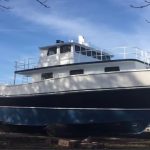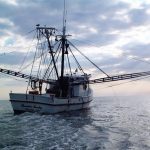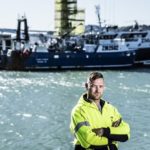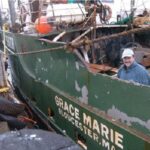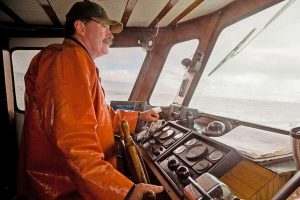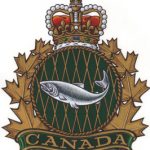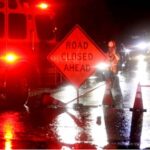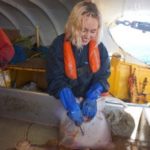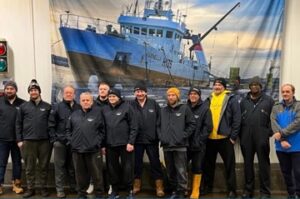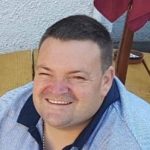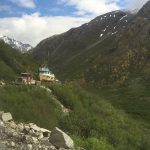Public Notice’s
Federal Register notices – proposed rules – rules – significant documents https://www.federalregister.gov/
——————————————————————————————————————–
Fishery Scientists Address Overfished Striped Marlin Stock,
Recommend Acceptable Biological Catches
HONOLULU (20 June 2014) A group of prominent scientists, resource economists, sociologists, population modelers and other knowledgeable experts from throughout the Pacific concluded its three-day meeting Thursday in Honolulu with recommendations for the Western Pacific Regional Fishery Management Council on federally managed fisheries in Hawai`i, American Samoa, Guam, the Commonwealth of the Northern Mariana Islands (CNMI) and the US Pacific remote island areas.
Striped Marlin
The Scientific and Statistical Committee (SSC) addressed the issue of the Western and Central North Pacific Ocean striped marlin stock, which was determined by the National Marine Fisheries Service (NMFS) to be overfished largely due to excessive international fishing pressure. In an effort to avoid a disproportionate impact on Hawai`i charter vessels, the SSC recommended prohibiting the Hawai`i longline fishery from retaining striped marlin when the fishery reaches 95 percent of the US quota of 458 metric tons in the Western and Central Pacific Ocean. The Hawai`i charter and troll fishery has never caught more than 5 percent of the total Hawai`i catch. The US quota stems from the catch limits established by the Western and Central Pacific Fisheries Commission.
Acceptable Biological Catches for Coral Reef Ecosystem Fisheries
The SSC recommended that the acceptable biological catches (ABCs) for 2014 be rolled over for 2015 to 2018 for species/species complexes that have no new scientific information and no new catch data and for which catches in the past years did not exceed the annual catch limits (ACLs). This rollover would apply to CNMI reef shark, bumphead parrotfish and humphead wrasse in American Samoa, Guam and the CNMI as well as precious corals, slipper lobsters and Kona crab in all island areas. The Committee also recommended a multiyear specification of four years (2015-2018) for these ABCs to reduce the administrative and scientific burden of more frequent re-analyses.
The SSC is responsible for recommending the ABCs to the Council. Once the ABC for a stock or stock complex is provided to the Council, the Council then specifies the ACL.
Main Hawaiian Islands Deep-7 Bottomfish Fisheries
The SSC reviewed an updated bottomfish stock assessment for seven deepwater main Hawaiian Islands (MHI) bottomfish, known as the Deep-7, as a possible replacement to the currently accepted best available science for determination of bottomfish ABCs. The MHI Deep-7 include several snappers (lehi, ehu, onaga, opakapaka, kalekale, gindai) and Hawaiian sea bass (hapu`upu`u). The major change in the new assessment is in the standardization procedure for catch per unit effort (CPUE), not the addition of new data. CPUE is an indirect measure of a target species’ abundance. Based on the assessment, the SSC recommended maintaining ABC for the MHI Deep-7 at 346,000 pounds for fishing year 2015, which represents a risk-of-overfishing level of 41 percent.
The SSC further recommended a more detailed examination of the CPUE standardization procedure in a meeting between a subcommittee of the SSC and the authors of the 2014 assessment.
Relief for American Samoa Fishery
The SSC considered temporary modifications (one or three years) to the Large Vessel Prohibited Area in American Samoa to help mitigate poor catches of albacore tuna by large vessels in recent years and promote fishery diversification. The scientists noted that current albacore catches since late May 2014 appear to have improved. The Committee made an effort to consider both the needs of large and small boat vessels and to minimize potential for negative fishery and social impacts.
The Council will consider the recommendations of the SSC and its other advisory bodies when it convenes June 25 to 27, at the YWCA-Fuller Hall, 1040 Richards St., Honolulu. The public is invited to attend and provide comments. For the full agenda of the Council meeting and details on public comment opportunities, go to www.wpcouncil.org/category/
As part of the Council meeting, a Fishers Forum on noncommercial fishing will be held on June 25,2014, at the Harbor View Center at Pier 38, 1129 North Nimitz Highway, Honolulu (above Nico’s restaurant). This free public event will feature discussion on catch limits, fishing licenses, data collection and other recreational, subsistence and cultural fishing issues. This Forum will also include a NOAA-led listening session to allow fishermen to weigh in on a proposed national recreational fishing policy, informational booths, door prizes and more.
The Western Pacific Regional Fishery Management Council was established by Congress in 1976. Under the MSA, the Council has authority over the fisheries in the Pacific Ocean seaward of the State of Hawai`i, the Territories of American Samoa and Guam, the Commonwealth of the Northern Mariana Islands and the US remote island area possessions.
——————————————————-
Fishery Scientists and Managers to Address Fishery Collapse in American Samoa, Overfishing in the Western Pacific Region
HONOLULU (17 June 2014) The American Samoa longline fishery is suffering from a potential economic collapse. In 2013, many vessels in the fishery operated at a loss as catches of South Pacific albacore were insufficient to cover operating costs. This and other issues are being addressed at the Scientific and Statistical Committee (SSC) that advises the Western Pacific Regional Fishery Management Council as the SSC convenes June 17 to 19 at the Council office, 1164 Bishop St., Suite 1400, Honolulu. The public is invited to attend and provide comments.
Challenging operating conditions are not confined solely to the American Samoa fleet. Fleets across the Central South Pacific from Fiji to the Cook Islands have suffered similar effects stemming from a mix of high operating costs-mainly fuel-lower prices for albacore and low catch rates of South Pacific albacore.
Longline fishermen perceive an influx of Chinese longline vessels across the South Pacific to be responsible for increased catch competition that is lowering catch rates for domestic longline fisheries. Chinese vessels enjoy substantial subsidies on fuel, licensing, freight costs, vessel construction, exports, tax, loans and labor. The influx of these vessels has been attributed as the main contributor to the doubling of the South Pacific albacore catch from around 40,000 metric tons (mt) in 2000 to over 80,000 mt in 2012. Current catches of South Pacific albacore are approaching and may be exceeding the maximum sustainable yield of the stock.
The Council is considering options to provide relief to the American Samoa fishery such as temporarily opening parts of the large vessel prohibited area in American Samoa to vessels permitted under the American Samoa limited entry program. Spatial options were developed for this fishery to reduce potential gear conflict and catch competition between larger longline vessels and small scale commercial and recreational troll vessels.
The SSC is also considering and may make recommendations to the Council on the Western and Central North Pacific Ocean (WCNPO) striped marlin stock, which has been determined by the National Marine Fisheries Service (NMFS) to be overfished. The overfishing and overfished condition of the WCNPO striped marlin is due largely to excessive international fishing pressure. However, NMFS believes that the two tuna regional fishery management organizations, the Inter-American Tropical Tuna and the Western Central Pacific Fisheries Commissions, have inadequate measures in place to correct the problem. The Western Pacific Regional Fishery Management Council is thus obliged to take international and domestic management action under the relevant sections of the Magnuson-Stevens Fishery Conservation and Management Act (MSA) to address international and domestic impacts, respectively. A domestic rule under the Council’s Pelagic Fishery Ecosystem Plan may affect Hawai`i’s pelagic fisheries.
The SSC will also discuss specifying acceptable biological catches for the main Hawaiian Islands deep 7 and non-deep 7 bottomfish and for crustaceans, coral reef fish and precious corals in the Western Pacific Region as required by the MSA. The Council needs to specify annual catch limits for the fishing year 2015 and may consider a multi-year specification.
Recommendations from the SSC will be considered by the Council June 25 to 27, 2014, at the YWCA-Fuller Hall, 1040 Richards St., Honolulu. For the full agendas of the SSC and Council meetings and details on public comment opportunities, go to www.wpcouncil.org/category/
As part of the Council meeting, a Fishers Forum on noncommercial fishing will be held on June 25,2014, at the Harbor View Center at Pier 38, 1129 North Nimitz Highway, Honolulu (above Nico’s restaurant). This free public event will feature discussion on catch limits, fishing licenses, data collection and other recreational, subsistence and cultural fishing issues. This Forum will also include a NOAA-led listening session to allow fishermen to weigh in on a proposed national recreational fishing policy, informational booths, door prizes and more.
The Western Pacific Regional Fishery Management Council was established by Congress in 1976. Under the MSA, the Council has authority over the fisheries in the Pacific Ocean seaward of the State of Hawai`i, the Territories of American Samoa and Guam, the Commonwealth of the Northern Mariana Islands and the US remote island area possessions.
Scientific and Statistical Committee: Dr. Charles Daxboeck, chair, (BioDax Consulting Tahiti); Dr. Judith Amesbury (Micronesian Archeological Research Services); Dr. Paul Callaghan (University of Guam retired); Dr. Frank A. Camacho (University of Guam); Dr. Milani Chaloupka (University of Queensland); Dr. Richard Deriso (Inter-American Tropical Tuna Commission); Dr. Erik Franklin (Hawai`i Institute of Marine Biology); Dr. John Hampton (Secretariat of the Pacific Community); David Itano (NMFS Pacific Islands Regional Office); Dr. Pierre Kleiber (NMFS PIFSC, retired); Dr. Donald Kobayashi (NMFS PIFSC); Dr. Molly Lutcavage (University of New Hampshire); Dr. Todd Miller (CNMI Division of Fish & Wildlife); Dr. Domingo Ochivallo (American Samoa DMWR); Jim Lynch (K&L Gates); Dr. Minling Pan (NMFS PIFSC); Dr. Craig Severance (University of Hawai`i retired); Dr. John Sibert (Pelagic Fisheries Research Program retired); and Dr. Robert Skillman (NMFS PIFSC retired).
Western Pacific Regional Fishery Management Council: Appointees by the Secretary of Commerce from nominees selected by American Samoa, CNMI, Guam and Hawai`i governors: Michael Duenas, Guam Fishermen’s Cooperative Association (Guam) (vice chair) ; Edwin Ebisui (Hawai`i) (vice chair); Richard Seman, education and outreach specialist (CNMI) (vice chair); William Sword, recreational fisherman (American Samoa) (Vice Chair); Michael Goto, United Fishing Agency Ltd. (Hawai`i); Julie Leialoha, biologist (Hawai`i); Dr. Claire Tuia Poumele, Port Administration (American Samoa); and McGrew Rice, commercial and charter fisherman (Hawai`i). Designated state officials: Arnold Palacios, CNMI Department of Land and Natural Resources (chair); William Aila, Hawai`i Department of Land & Natural Resources; Dr. Ruth Matagi-Tofiga, American Samoa Department of Marine and Wildlife Resources; and Mariquita Taitague, Guam Department of Agriculture. Designated federal officials: Michael Tosatto, NMFS Pacific Islands Regional Office; Bill Gibbons-Fly, US Department of State; RAdm Cari B. Thomas, US Coast Guard 14th District; and Susan White, USFWS Pacific Reefs National Wildlife Refuges Complex.
———————————————————————-
Groundfish Disaster Aid Spending Plan
The Northeast Seafood Coalition, Associated Fisheries of Maine, Cape Cod Commercial Fishermen’s Alliance and the Maine Coast Fishermen’s Association offer the following spending plan proposal in accordance with the groundfish disaster aid funds appropriated by Congress to mitigate the impact of the commercial groundfish disaster which was declared by the Secretary of Commerce on September 13, 2012.
This proposal is meant to accomplish the following:
(1) Offer a regional spending plan to ensure consistency in the treatment of fishing businesses affected by the disaster. (2) Mitigate the economic injury incurred to those commercial fishing businesses that have been impacted by the groundfish disaster. (3) Improve the future viability of the commercial groundfish fishery.
This proposal is focused on the harvesting component of the commercial groundfish fishery. Although our organizations recognize shoreside facilities which work off of fees in relation to groundfish landings from federally permitted northeast multispecies vessels have been negatively impacted, this group would need more information to make an informed recommendation for providing assistance to such businesses. Additionally, assistance to shoreside businesses may not be consistent with the metric used by the Department of Commerce to calculate the funds for the Northeast region, value of loss revenue from harvester landings.
As noted in our letter to Congress on January 30, 2014, our industry organizations continue to believe this appropriation was made specifically for the purpose of mitigating the impacts of the fishery disaster on our fishery and should be strictly applied for that purpose. We feel strongly that it is not appropriate to allocate any of these funds to ongoing management priorities including observer / monitoring coverage, cooperative research, assessments or other elements of the National Marine Fisheries Service budget, or those initiatives such as marketing that could be funded through other sources such as the S-K program.
(1) Direct Assistance to Permit / Vessel Owners:
Qualifying Criteria:
• Federally documented or state registered vessels holding limited access federal northeast multispecies permits during the 2010, 2011, and 2012 fishing years.
• Were actively fishing in a groundfish sector or common pool in fishing years 2010, 2011 and 2012.
• Vessels must have documented landings of regulated groundfish in either 2010, 2011 or 2012. The industry organizations recommend a minimum groundfish landings threshold be evaluated and utilized in order to strike a balance between being inclusive and minimizing instances where the level of individual payments are out of scale with a vessel’s dependence on groundfish. It is envisioned that those vessels that meet the minimum criteria would all be treated the same.
Administration:
• Since all qualified vessel owners will be treated the same, divide any amounts allocated to direct assistance for permit / vessel owners by the number of qualified vessels. It is recommended by this group that those vessels which qualify under the criteria be treated objectively, fairly and the same. No caps should be placed upon those that qualify regardless of common ownership interests. The organizations that put this recommendation forward understand that this proposal will be treating small vessels with one person onboard the same as large vessels with multiple crew and that the impacts vary greatly among the broad group of vessels that will qualify under this intentionally inclusive proposal. By treating all vessels the same our overriding objective is to simplify the process and expedite the distribution of much needed funds.
Distribution:
At this time the industry recommendation is to allocate 11 million dollars for Direct Cash Assistance to qualified vessels to help with immediate financial needs and economic injury incurred as a result of the disaster.
(2) Direct Assistance to Crew:
The industry recommendation is to allocate 2 million dollars for direct cash assistance to fishing vessel crew. It is recommended that this assistance be limited to those crew members who served on qualifying vessels during the qualifying period. This program should not place any burden on vessel owners to verify crew employment but should include guidelines whereby the crew member can document income, likely through tax statements, verifying his or her own employment. The program should be administered through appropriate agencies or organizations with appropriate qualifications.
(3) Assistance to Improve Future Viability of the Fishery:
At this time the industry requests NMFS design and implement a Buyback aimed to purchase permits only, no vessels, and to value potential sector contribution (PSC) in order to redistribute 100% of the PSC acquired to the remaining northeast multispecies permit holders using the same method currently used by NOAA, specified under the Final Rule for Framework 45 – the distribution of the PSC from cancelled permits, when permits are not renewed i . It is recommended that if at any time it is determined the desired goal or target cannot be met the funds distributed for this purpose be immediately reconsidered for an alternative distribution.
Conditions:
• Allocate the remainder of the disaster assistance funds for the purpose of designing and implementing a Buyback that will meet the goal of redistributing an average, a minimum of 15% of the following stock PSCs: Georges Bank cod, Gulf of Maine cod, Cape Cod Gulf of Maine yellowtail and Georges Bank yellowtail, witch flounder (grey sole), American plaice (dabs) and white hake.
• The industry requests the following timeline be closely followed to ensure expediency. The program design must be developed and completed by October 1, 2014 (six months). The program must be implemented and, funds distributed to accepted permit holders and PSC redistributed to those remaining, by April 1, 2015 – for the start of the 2015 fishing year.
• If during the design of this program NMFS determines that the program cannot meet the targeted goal of 15% average PSC redistribution of Georges Bank cod, Gulf of Maine cod, Cape Cod Gulf of Maine yellowtail and Georges Bank yellowtail, witch flounder (grey sole), American plaice (dabs) and white hake or within the timeline recommended then the funds should not be used for this Buyback and the disposition of funds should be reevaluated by Industry.
I Final Rule Northeast Multispecies Fishery Framework 45, 76 FR 23042, April 25, 2011 page 23052.
House Subcommittee Hearing (in part) to Exempt Commercial Fishing and For-Hire Fishing Vessels
from Onerous Vessel Discharge Permitting Requirements
The Subcommittee on Coast Guard and Maritime Transportation of the Committee on Transportation and Infrastructure of the U.S. House of Representatives held a hearing on March 4 on Maritime Transportation Regulations: Impacts on Safety, Security, Jobs and the Environment: Part II. U.S. Congressman Frank A. LoBiondo (NJ-02), a senior member of the House Transportation & Infrastructure Committee, applauded inclusion by the Committee of his amend ment (co-sponsored by Rep. Rick Larsen of WA State) to place a permanent moratorium from Environmental Protection Agency (EPA), state regulations and fines governing incidental discharges on commercial fishing and charter fishing vessels regardless of size, and all other commercial vessels less than 79 feet.
ment (co-sponsored by Rep. Rick Larsen of WA State) to place a permanent moratorium from Environmental Protection Agency (EPA), state regulations and fines governing incidental discharges on commercial fishing and charter fishing vessels regardless of size, and all other commercial vessels less than 79 feet.
“Starting this December, commercial fishermen, charter and tour boat operators, and owners of other commercial vessels less than 79 feet will have to apply for and receive individual permits from the EPA to discharge from their vessels such things as deck wash, bilge water, and the condensation from air conditioning units. Vessels that operate without these permits could be subject to citizen lawsuits and daily fines that exceed $32,000 per violation,” said LoBiondo.
Central to the LoBiondo/Larsen addition to H.R. 4005 would be the sheltering of fishing and other small commercial vessels from citizen lawsuits. These suits, while ostensibly brought to protect water quality, would more realistically be used as another weapon by anti-fishing activists in their ongoing assault on commercial fishermen. Testifying on the second panel was James Roussos, Vice President of Boat Operations, LaMonica Fine Food LLC in Milleville, New Jersey.
In his testimony he stated to the Subcommittee “please understand that those of us in the business of harvesting food for the benefit of this nation do so in a hostile environment. We are under constant scrutiny by environmentalists who petition or sue the federal government on a regular basis to increase environmental protection and restrict fishing activities…. Environmental regulation by litigation is out of control and could potentially cripple our industry.” He added “The VGP, if inflicted upon the fishing industry will only add more paperwork to the bureaucracy, further demoralize an important industry’s workforce, and cause economic hardship for little if any environmental benefit.
According to Jeff Reichle, president of Lund’s Fisheries in Cape May, New Jersey “the exemption avoids an unnecessary burden and potential serious fines on the U.S. fishing fleet while not reducing EPA’s duties to protect our waters from serious pollutants.”
***On March 28, 2013 the EPA published requirements for permitting ballast water and other discharges incidental to the normal operations of vessels (VGP) greater than or equal to 79-feet in length. The VGP ballast water requirements went into effect in December 2013 while the incidental discharge permit requirements will be implemented by EPA in December 2014. On November 30, 2011, the EPA released a draft Small Vessel General Permit (sVGP) to cover commercial vessels less than 79 feet in length that are currently subject to a permit moratorium that expires on December 18, 2014. The draft sVGP requires these vessels to comply with best management practices for the same 27 incidental discharges as the 2013 VGP. The EPA estimates that approximately 138,000 vessels will need to comply with the draft sVGP at a cost of up to $12 million annually. This estimate does not include the cost of additional regulatory requirements which may be added by the states. A final sVGP is currently in agency review and is expected to be published in the coming months.*** ______________________________
For further information contact Greg DiDomenico, Executive Director (gregdidomenico@gmail.com, or 609-675 0202)
———————————————————————————————————————————————–
NOAA Fisheries to cover all groundfish sector at-sea monitoring costs for fishing year 2014
 cil under its groundfish plan.
cil under its groundfish plan.
Health Care Open Enrollment to start October 1
Info on the Affordable Care Act for Fishermen and Fishing Groups
The Affordable care act provides an opportunity for self-employed individuals and families to apply for health insurance through the “Marketplace”, regardless of previous conditions or non-coverage. The Act requires individuals to have coverage beginning January 1, 2014, and provides tax credits to help pay for coverage for some individuals, with penalties of $95 or 1% of annual income for not having coverage. For those already paying for health insurance, there are potential refunds for qualified individuals and small businesses.
The Act provides small businesses that do not currently offer coverage the opportunity to shop for group coverage, with tax credits available to qualifying small businesses.
The process for both is online, with telephone support as well as localized one on one support through “navigators” that are trained and funded to help.
Wall Street Journal: What You Need to Know About the Affordable Care Act:
http://online.wsj.com/article/
Below are descriptions and useful links for fishermen and fishing groups.
Fishermen – self employed:
If you’re self-employed with no employees, you’re not considered an employer. You can use the individual Marketplace to find coverage that fits your needs.
If you live in Alaska, you’ll use the healthcare.gov federal marketplace at https://www.healthcare.gov/
More info online at https://www.healthcare.gov/
More info for families is at https://www.healthcare.gov/
If you live in other states, your state may operate their own marketplace. Find out your marketplace and apply for coverage and compare plans by selecting your state at https://www.healthcare.gov/
For individual help in your local area, see “Navigators” below.
Tip: be sure to check the plan choices details to understand what you are buying, and to ensure that the providers and hospitals that you prefer are included in your coverage network.
Fishing Groups and Small Businesses Employers:
You can apply for small business health insurance group plans through the Small Business Health Options Program (SHOP) Marketplace: https://www.healthcare.gov/
The Small Business Health Options Program (SHOP) is a new program that simplifies the process of buying health insurance for your small business. For 2014, the SHOP Marketplace is open to employers with 50 or fewer full-time-eqivalent employees (FTEs). The advantages of using SHOP include:
- · You control the coverage you offer and how much you pay toward employee premiums.
- · You can compare health plans online on an apples-to-apples basis, which helps you make a decision that’s right for your business.
- · You may qualify for a small business health care tax credit worth up to 50% of your premium costs. You can still deduct from your taxes the rest of your premium costs not covered by the tax credit. Beginning 2014 the tax credit is available only for plans purchased through SHOP.
Compare small business plans and apply online
You can enroll starting October 1, 2013 for coverage starting as soon as January 1, 2014. You can also enroll and begin coverage any time after January 1, 2014.
See https://www.healthcare.gov/
Fishing Groups and Small Businesses Employers (continued):
Small Business Help Resources: Have questions about the SHOP Marketplace for businesses with 50 or fewer employees? Call 1-800-706-7893 (TTY users: 1-800-706-7915). Hours: Monday through Friday, 9 a.m. to 5 p.m. EST.
(from https://www.healthcare.gov/
IRS Small Business Health Care Tax Credit for Small Employers
To be eligible, you must cover at least 50 percent of the cost of single (not family) health care coverage for each of your employees. You must also have fewer than 25 full-time equivalent employees (FTEs). Those employees must have average wages of less than $50,000 (as adjusted for inflation beginning in 2014) per year. Remember, you will have to purchase insurance through the SHOP Marketplace to be eligible for the credit for tax years 2014 and beyond…
To claim the credit you must use Form 8941, Credit for Small Employer Health Insurance Premiums, to calculate the credit. For detailed information on filling out this form, see the Instructions for Form 8941.
More info:
http://www.irs.gov/uac/Small-
IRS Form 8941: http://www.irs.gov/pub/irs-
Instructions for Form 8941: http://www.irs.gov/pub/irs-
Navigators
There are individuals or organization trained and able to help consumers, small businesses, and their employees as they look for health coverage options through the Marketplace, including completing eligibility and enrollment forms. These individuals and organizations are required to be unbiased. Their services are free to consumers. For Alaska, the federally funded Navigators are The United Way of Anchorage and the Alaska Native Tribal Health Consortium, who are prepared with locations and contacts serving Alaska communities. Visit https://localhelp.healthcare.
Find Local help page: https://localhelp.healthcare.
24/7 Toll Free help line: 1-800-318-2596 TTY: 1-855-889-4325
https://www.healthcare.gov/
More info: https://www.healthcare.gov/
Enroll Alaska There is also a newly-created broker, Enroll Alaska, that has also geared up to provide information and to help Alaskans shop and enroll in coverage, funded by participating insurers. More information: Anchorage Daily News: Alaska broker makes big move under Affordable Care Act
http://www.adn.com/2013/09/28/
Enroll Alaska website:
http://www.enrollingalaska.
This information complied by staff of United Fishermen of Alaska. Please contact us with feedback to help us serve our members, at ufa@ufa-fish.org or 907-586-2820.
————————————————————————————————
FEDERAL REGISTER ACTIONS
Click here [http://r20.rs6.net/tn.jsp?e=
for a list of only those actions open for public comment. Scroll search for National
Oceanic and Atmospheric Administration.
For a list of all daily actions, check the Federal Register online [http://r20.rs6.net/tn.jsp?e=
~~~~~~~~~~~~~~~~~~~~~~~~~~~~~~

































